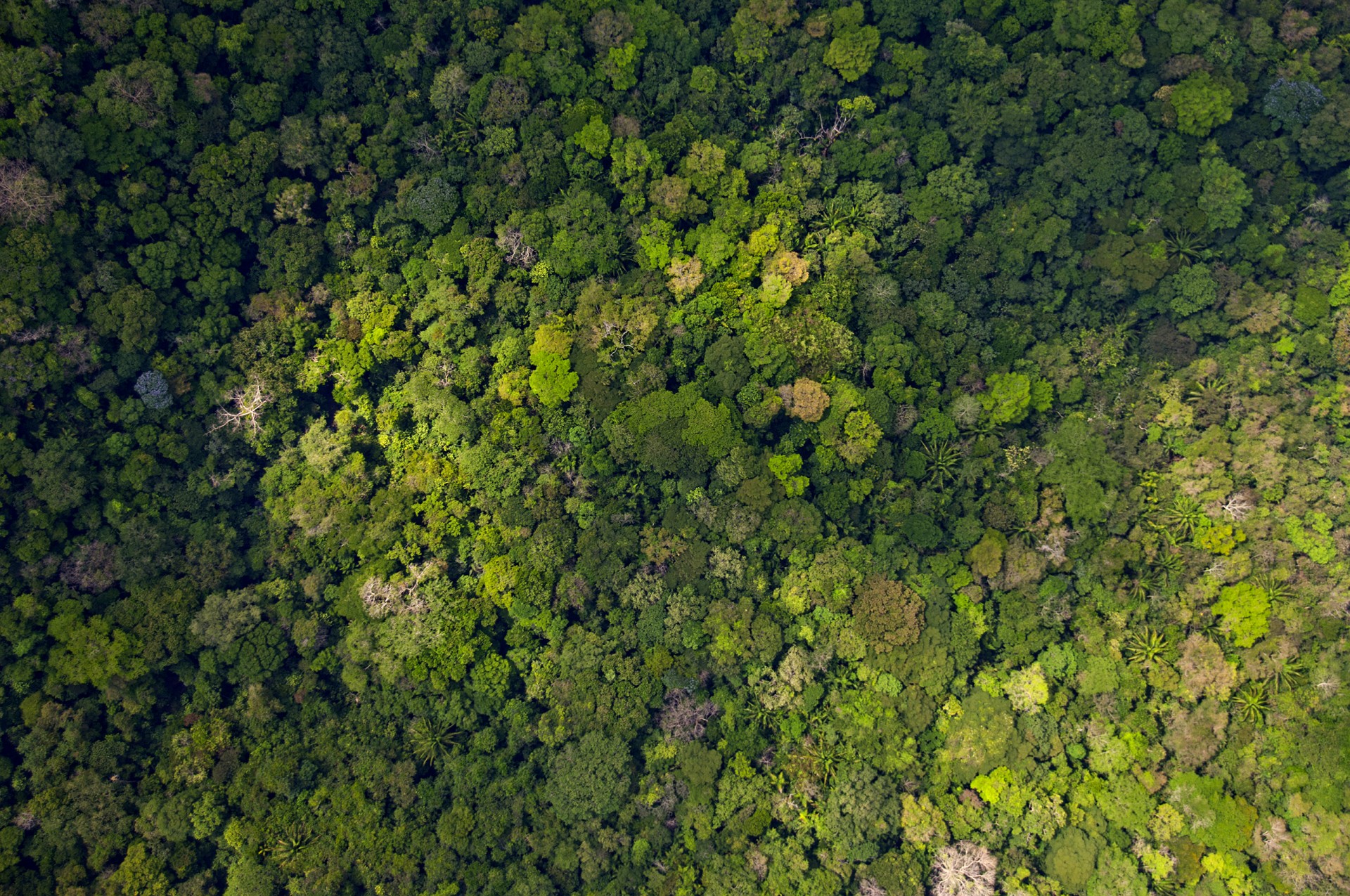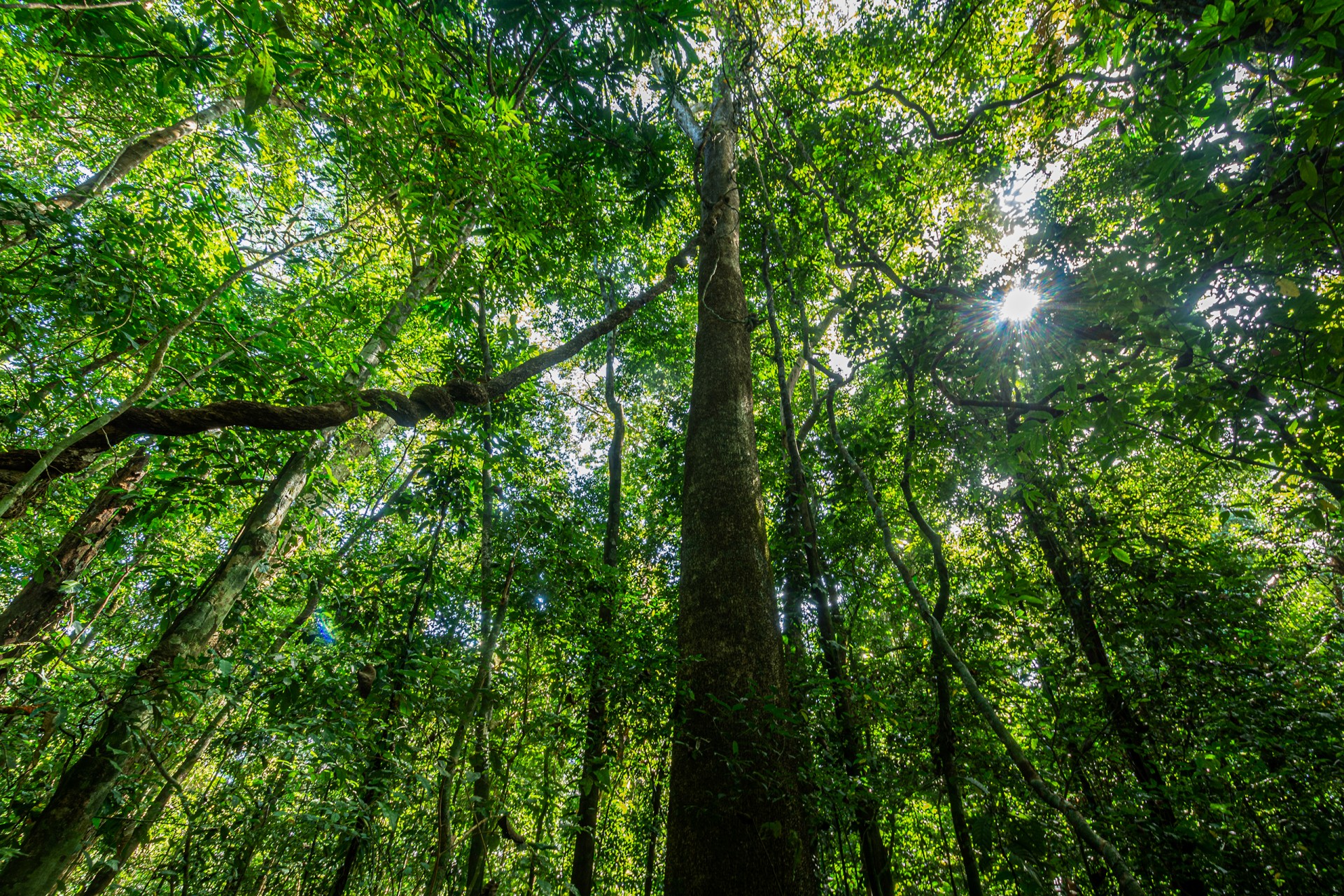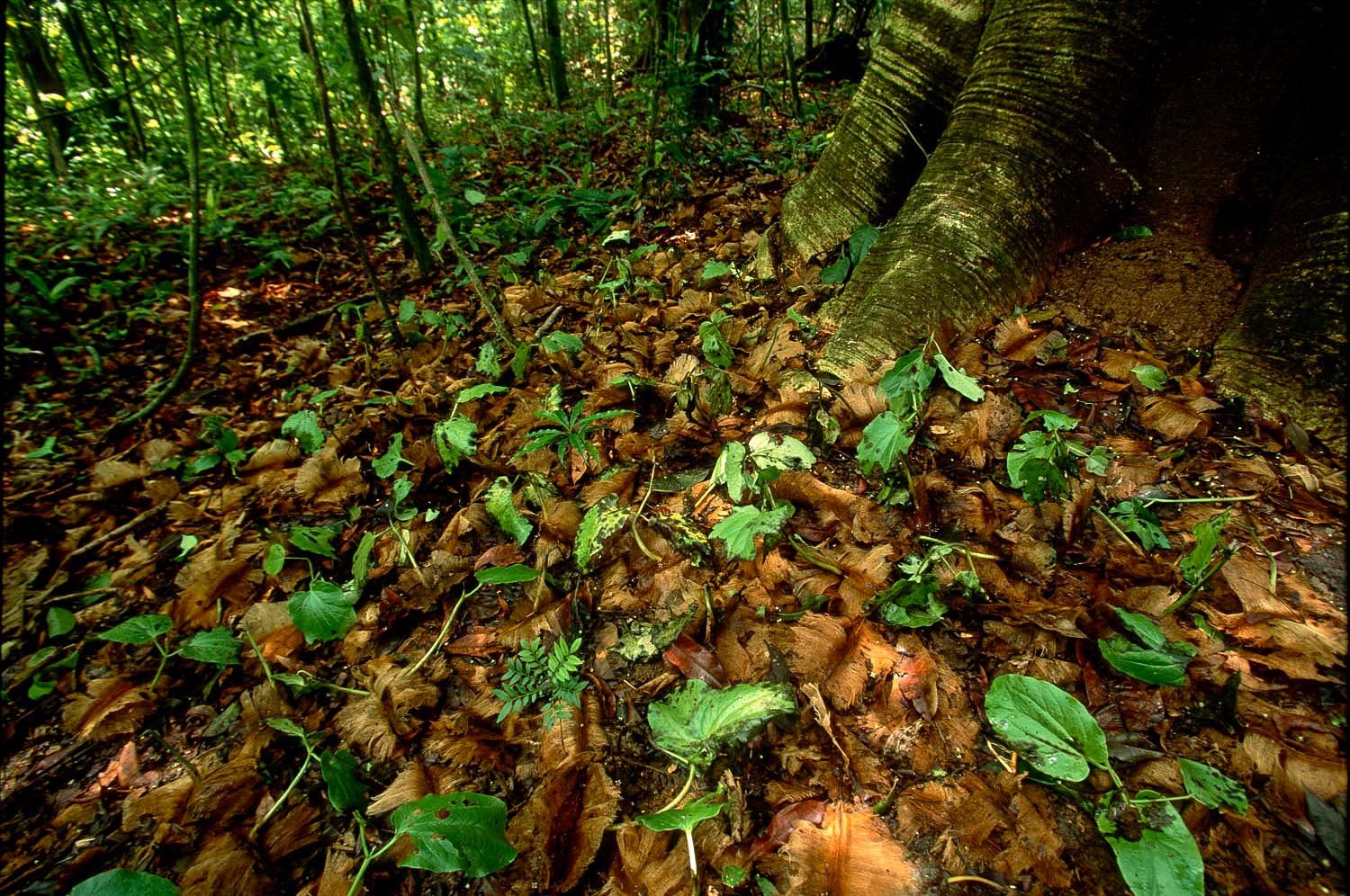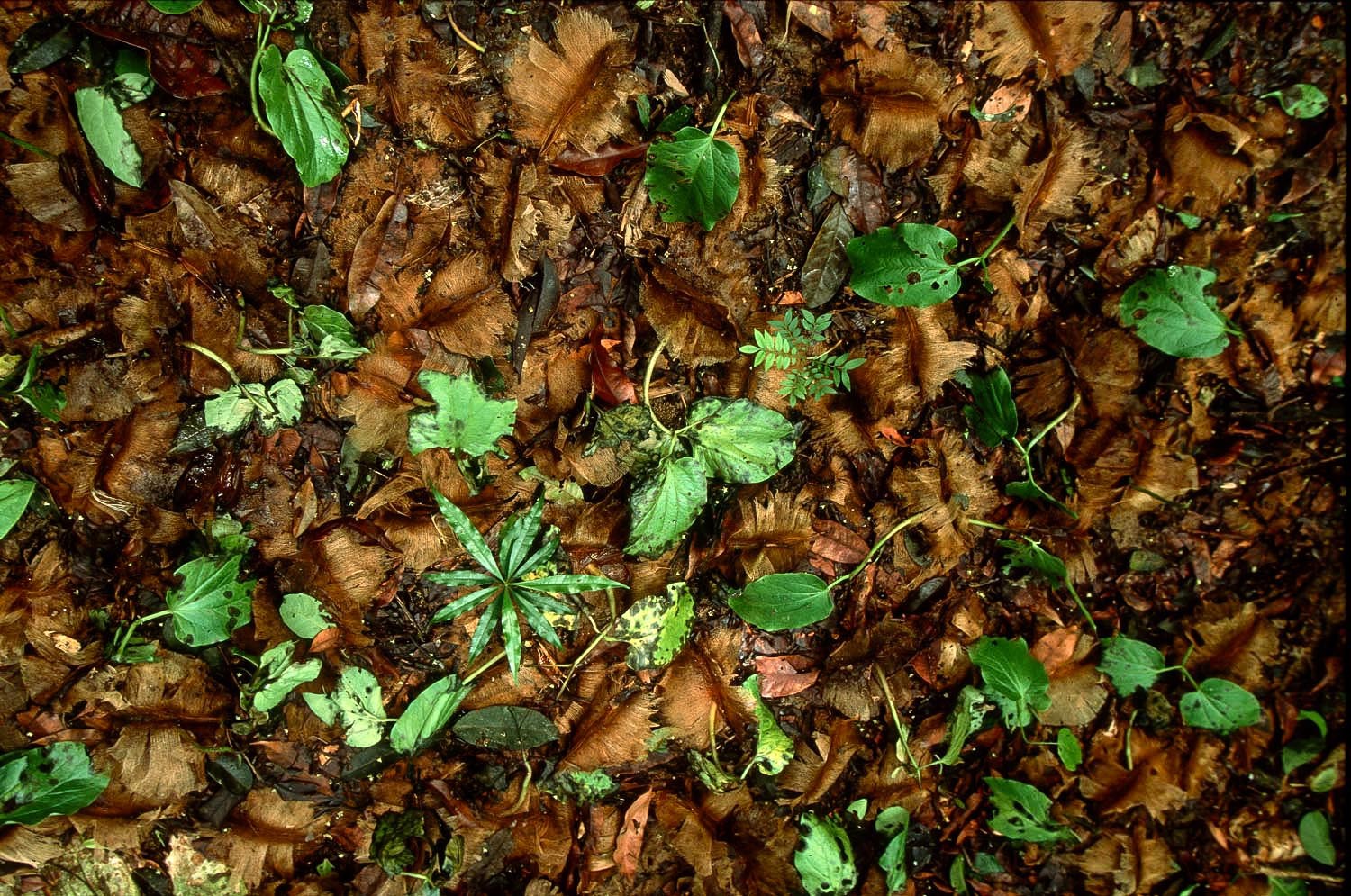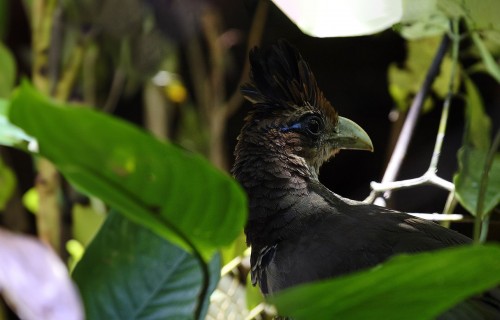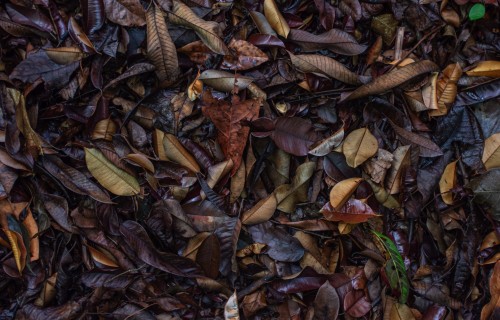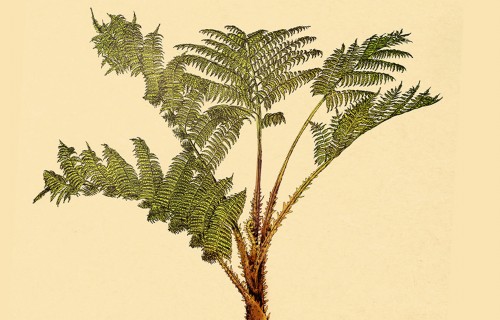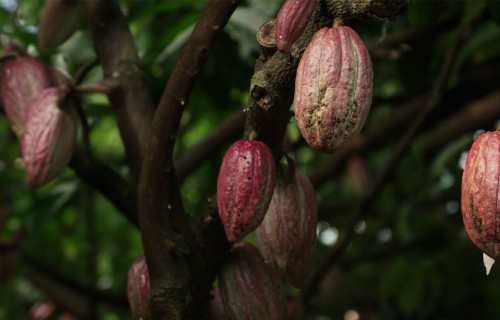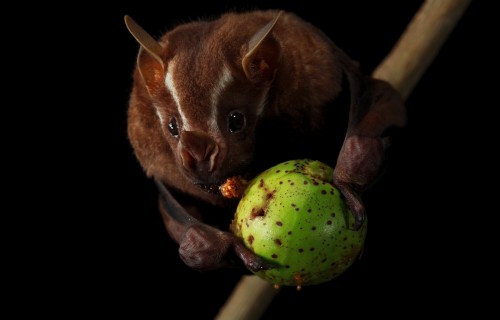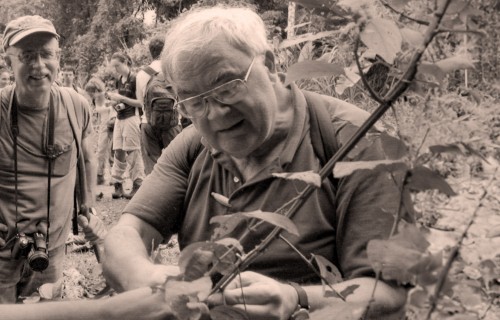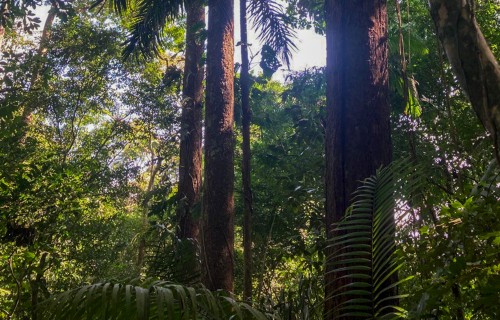Harnessing the wisdom of indigenous communities for marine conservation
Social
Distancing
Like repels like: Social distancing may explain coexistence of biodiverse tree species in tropical forests
Panama
STRI staff scientist Joe Wright and colleagues present results in Science indicating that diversity among adult tropical trees can be maintained if spatial repulsion among individuals of the same species is greater than spatial repulsion among individuals of different species.
Thousands of seeds rain down around huge tropical trees, but very few germinate successfully near their mothers and even fewer prosper. Michael Kalyuzhny and Annette Ostling at the University of Texas at Austin, Jeffrey Lake at the University of Michigan, and Joe Wright, staff scientist at the Smithsonian Tropical Research Institute explored the implications. They discovered that reductions in recruitment within a few meters of mother trees unexpectedly caused populations of adults to be separated by distances of up to 100 meters in dozens of tree species. These large personal bubbles could explain why tropical forests have so many different tree species. The team’s results are published in Science magazine.
“This study presents a new approach to explain how so many tree species coexist in tropical forests,” said Wright, who received the 2022 Smithsonian Distinguished Scholar in the Sciences Award. “And because we used data from Barro Colorado Island in Panama, the first of 76 forests in the world to use standardized methods to compare tree growth and forest composition, we have a unique opportunity to use the same approach to shed light on processes shaping forest communities around the world and to understand what makes them different from one another as they respond to global change.”
S. Joseph Wright examining a seed from a litterfall trap, used to capture fruit and seeds and leaves falling from the canopy to better understand tropical forest dynamics. Credit: Sean Mattson, STRI.
Tropical forest canopy, Barro Colorado Island, Panamá: Notice the diversity—the many different tree species in this small area. Credit: STRI Archives.
What does it take for hundreds of species to coexist in a small area? First, as a species becomes more common, its performance must decline, preventing it from taking over. This is called Conspecific Negative Density Dependence or CNDD. Plant enemies, including insect herbivores and microbial pathogens, build up populations near established trees causing CNDD. Second, the decline in performance caused by nearby trees of the same species (CNDD) must be greater than the decline caused by trees of other species. This is called Heterospecific Negative Density Dependence or HNDD. Enemies with stronger negative effects on one species and weaker effects on other species cause CNDD to be greater than HNDD and contribute to the coexistence of their host plant species. The most widely accepted explanation of the observation that many more plant species coexist in tropical forests than elsewhere is that plant enemies are more virulent causing CNDD to exceed HNDD in the year-round warmth and humidity of tropical forests.
There has been a fly in the ointment, however. It has long been recognized that individual plants of the same species tend to congregate much like teenagers at the local mall. In contrast, enemies that prevent successful germination and recruitment near mother trees should cause individuals of the same species to spread out, like birds resting on a powerline.
Smithsonian Institution Secretary, Lonnie Bunch, presents STRI scientist Joe Wright with the 2022 Smithsonian Distinguished Scholar in the Sciences award. Credit: Jennifer Berry, Smithsonian Institution.
Strangler fig on Barro Colorado Island. Credit: Jorge Aleman, STRI.
Many biological processes influence the distribution of plants in space. The dispersal of seeds is particularly important, with most seeds falling near their mothers and very few dispersing large distances. In the tropical forest on Barro Colorado Island, Panama, scientists have kept track of 400,000 individual trees in a 50-hectare area of forest and can determine the strength of CNDD and HNDD for growth and survival rates as well as seed dispersal distances. Wright and colleagues used these estimates of seed dispersal distances to simulate tree populations and then compared the spatial patterns of observed and simulated populations.
They predicted that observed populations would be over dispersed – with fewer neighbors of the same species at the short distances influenced by shared enemies – relative to populations simulated with seed dispersal. Much to everyone’s surprise, simulated populations had fewer neighbors of the same species out to distances of 75 to 125 meters in dozens of species. In retrospect, this result emerges because, although each tree only impacts its immediate neighbors, they in turn repel their neighbors and so forth, creating large-scale patterns from short-distance interactions. Wright and colleagues also simulated populations with seed dispersal and artificial strengths of CNDD and HNDD. The spatial pattern of observed populations could only be achieved if CNDD was much larger than HNDD.
Trees in the forest on Panama’s Barro Colorado. Credit: Steve Paton.
Collectively, these results provide some of the strongest evidence available to date that interactions between trees contribute to the high biodiversity observed in tropical forests. A next step will be to explore what causes those interactions and strong CNDD. Plant enemies are one possibility. That remains to be shown.
Reference: Kalyuzhny M, Lake JK, Wright SJ, Ostling AM. 2023. Pervasive within-species spatial repulsion among adult tropical trees. Science. https://www.science.org/doi/10.1126/science.adg7021
Listen to the podcast: Why Some Trees Find One Another Repulsive and We Don’t know How Much our Hands Weigh
Also thanks to the University of Texas, Austin press release: Tropical Trees Use Social Distancing to Maintain Biodiversity


